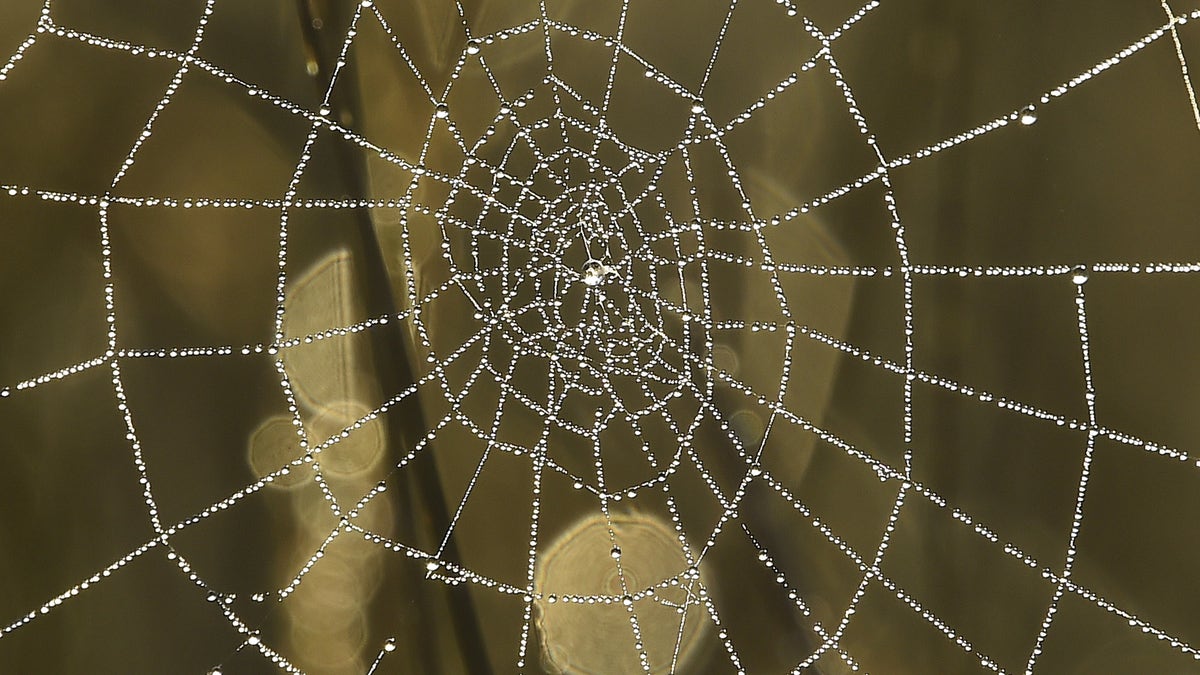
Dew drops on a spider web reflect the morning sun in Richmond Park in west London, Britain, October 2, 2015. (REUTERS/Toby Melville)
Spider webs are a wonder of the natural world. Not only are they beautiful to behold, they also are unique in how they stretch and move. Unlike most threads that sag when stretched, the sticky threads of a spider web can be stretched to their breaking point and then snap back into place without losing their tautness.
Not surprisingly, scientists have been studying spider webs for years, hoping to uncover the mechanism that allows the material to stretch, yet remain tight. Now, researchers from the University of Oxford, UK and the Universit Pierre et Marie Curie, Paris, France believe they have the answer and have used this knowledge to build a new class of biomaterial called liquid wire.
On the surface, the spider's web material may look fairly simple. It's a basic filament with sticky glue on the outside to capture prey, but in reality, the system is much more complex. The sticky glue that encases the thread does more than capture prey; it also functions like a fishing reel that coils up the excess parts of the thread. These loose parts uncoil when the web is stretched and then are recoiled inside the glue droplet when the tension is released. This simple but brilliant mechanism ensures the thread is taut in all situations.
More from Digital Trends:
- Your DNA may hold clues to when you'll lose your virginity, researchers say
- Here's what the inside of an Oculus Rift CV1 looks like
- Fearing a possible GPS outage, the U.S. Navy resumes teaching celestial navigation
The scientists were able to recreate this unique property using a plastic filament that was covered with tiny droplets of oil. The artificial liquid wire behaved just like the spider silk, with the thread extending and re-coiling inside the oil drop as the material was stretched and released.
The team plans to further refine this nature-inspired material and hopes to apply the principle to materials science, engineering, and medicine. "Our bio-inspired hybrid threads could be manufactured from virtually any components. These new insights could lead to a wide range of applications, such as microfabrication of complex structures, reversible micro-motors, or self-tensioned stretchable systems," said Dr. Herv Elettro, a doctoral researcher at Institut Jean Le Rond D'Alembert, Universit Pierre et Marie Curie, Paris.
